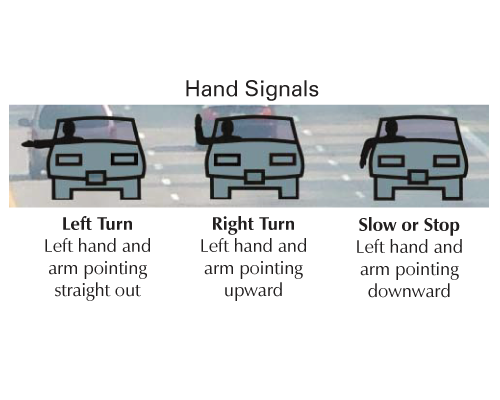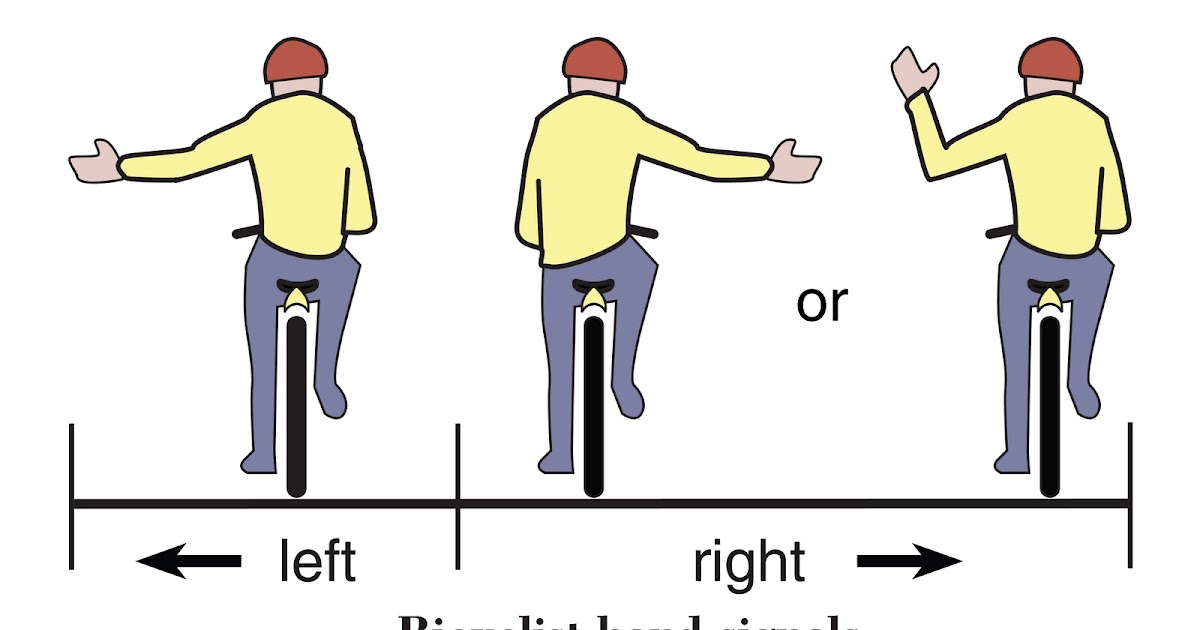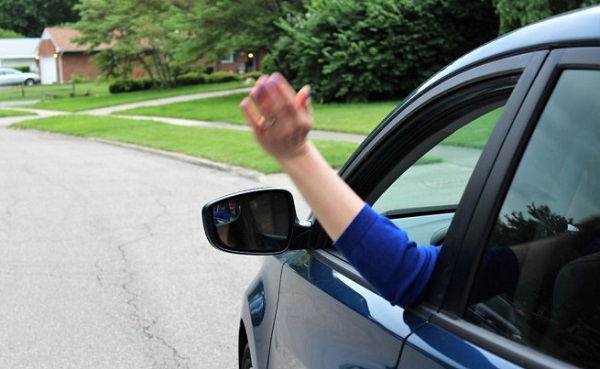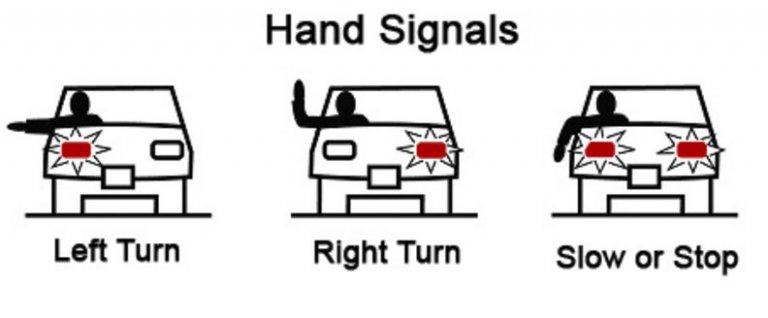
- ARM SIGNALS DRIVING DRIVERS
- ARM SIGNALS DRIVING FREE
ARM SIGNALS DRIVING FREE
Google™ Translate is a free third-party service, which is not controlled by the DMV. This translation application tool is provided for purposes of information and convenience only. The Department of Motor Vehicles (DMV) website uses Google™ Translate to provide automatic translation of its web pages. Call for emergency roadside assistance and stay in your vehicle until help arrives.
ARM SIGNALS DRIVING DRIVERS
Other drivers may not see your vehicle in time to avoid a collision.
Do not stop just over a hill or just around a curve. If you cannot get completely off the road, stop where people can see you and your vehicle from behind. If possible, pull off the road away from all traffic. If your vehicle does not have emergency flashers, use your turn signals. If you need to stop because of vehicle trouble: Use a hand signal when slowing and stopping. Lightly tap your brake pedal three or four times. If you can see a collision or hazard ahead, warn drivers behind you using these methods: To help other drivers see your vehicle, especially when the sun is low on the horizon. When a road sign states that headlights must be on. On mountain roads and tunnels (even on sunny days). When conditions (such as clouds, dust, smoke, or fog) prevent you from seeing other vehicles. If you need to use your windshield wipers due to fog, rain, or snow, you must turn on your low-beam headlights. When it is too dark to see from 1,000 feet away. It is illegal to drive using only parking lights. Dim your high-beam headlights to low beams within 500 feet of a vehicle coming toward you or within 300 feet of a vehicle you are following. They also make it easier for other drivers to see your vehicle. Your vehicle’s headlights help you see what is in front of you. Alert oncoming traffic on narrow mountain roads where you cannot see at least 200 feet ahead. Use your vehicle’s horn to let other drivers know you are there or warn others of a hazard. Remember to turn off your signal when you no longer need it. When you are almost through the intersection if you plan to turn shortly after crossing the intersection. Even when you do not see other vehicles around you. Before pulling next to the curb or away from the curb. At least five seconds before you change lanes on a freeway. 
Bicyclists may signal a turn with their arm held straight out, pointing in the direction they plan to turn. You can signal using your vehicle’s signal lights or using hand-and-arm positions. SignalingĪlways signal when you turn, change lanes, slow down, or stop. Your signals, horn, and headlights are important for communicating with other drivers, pedestrians, and bicyclists. When you are operating vehicle controls that require you to remove a hand from the steering wheel.Place your hand at the 12 o’clock position on the steering wheel.
 When you are turning while backing up to see where you are going behind you. There are only two situations that may require steering with one hand:
When you are turning while backing up to see where you are going behind you. There are only two situations that may require steering with one hand:  Reach across the arm still holding the wheel, grip the wheel, and pull up. Let go of the steering wheel with your other hand. Reach across the steering wheel to grasp the opposite side. Start with your hands at 8 and 4 o’clock. Use this steering wheel method when you turn at low speeds, park, or need to recover from a skid. Keep your hands in these positions, even when making turns. Do not cross your hands over the middle of the steering wheel. Start with your hands at 9 and 3 o’clock or 8 and 4 o’clock. To control your vehicle, it is critical to keep both hands on the wheel whenever possible.
Reach across the arm still holding the wheel, grip the wheel, and pull up. Let go of the steering wheel with your other hand. Reach across the steering wheel to grasp the opposite side. Start with your hands at 8 and 4 o’clock. Use this steering wheel method when you turn at low speeds, park, or need to recover from a skid. Keep your hands in these positions, even when making turns. Do not cross your hands over the middle of the steering wheel. Start with your hands at 9 and 3 o’clock or 8 and 4 o’clock. To control your vehicle, it is critical to keep both hands on the wheel whenever possible. 
Health – Physicians are required to report patients, who are at least 14 years old, to DMV if they believe you have medical conditions that may affect your ability to drive safely, such as lapse of consciousness. It is your responsibility to know the effects of the medications you take. Medications – Prescription and over-the-counter medications can make you an unsafe driver. Physical and Mental – You must be alert to quickly decide the correct course of action in any type of traffic situation, including unexpected ones. It is illegal to wear a headset or earplugs in both ears while driving.įatigue and Drowsiness – Can affect your vision and increase reaction time to hazards. Hearing – You must be able to hear horns, sirens, motorcycles, or screeching tires that may alert you of hazards. Vision – You must be able to notice hazards in different types of lighting, judge distances, adjust to traffic speed, and read road signs.








 0 kommentar(er)
0 kommentar(er)
